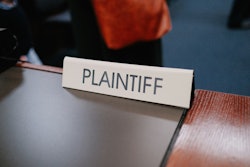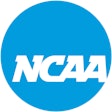Copyright 2018 Orange County Register
All Rights Reserved
Orange County Register (California)
Editor's note: This is the first of a two-part series on the culture of abuse at USA Swimming.
For decades the sexual abuse of young athletes by their coaches lingered just beneath the surface in American swimming's otherwise enriching waters.
In 2005, USA Swimming president Ron Van Pool decided it was time to bring the issue to the surface.
Giving his annual State of Swimming address, Van Pool pushed for a more aggressive approach within the sport to taking on sexual abuse.
"USA Swimming is frightfully behind the curve in this process, and there are those who would have us continue to lag," Van Pool said.
The speech, however, didn't make much of an impression with Chuck Wielgus, then in his eighth year as USA Swimming's executive director.
From AB: How to Stop Sexual Abuse in Sports
"There was nothing that struck me," Wielgus said later in a deposition.
Van Pool's warning certainly failed to spark a sense of urgency with Wielgus, the man in
charge of the day-to-day operations of swimming's national governing body at its Colorado Springs headquarters, or those around him at USA Swimming.
Five years later, Wielgus was asked in a deposition whether, in the wake of Van Pool's speech, USA Swimming had taken any steps to bring the organization up to speed on the sexual abuse issue.
"No," said Wielgus, who died last April after a lengthy battle with colon cancer.
The moment and its sense of complacency are indicative of the failure of USA Swimming to effectively address sexual abuse revealed in thousands of pages of documents obtained by the Southern California News Group.
The two decades after Wielgus was hired at USA Swimming have countered record-shattering Olympic success against the organization's inability to check a culture of sexual abuse, a failure that has victimized hundreds of young athletes, SCNG has found.
USA Swimming repeatedly missed opportunities to overhaul that culture, where the sexual abuse of underage swimmers by their coaches and others in positions of power within the sport was commonplace and even accepted by top officials and coaches, according to the documents and interviews with sexual abuse survivors, former Olympians, USA Swimming officials, safe-sport advocates and some of USA Swimming's leading financial benefactors.
The Southern California News Group investigation found:
• Top USA Swimming executives, board members, top officials and coaches acknowledge in the documents that they were aware of sexually predatory coaches for years, in some cases even decades, but did not act against them. In at least 11 cases, either Wielgus or other top USA Swimming officials declined to pursue sexual abuse cases against high-profile coaches even when presented with direct complaints, documents show. With some of the complaints, the decision not to pursue a case was made by Susan Woessner, USA Swimming's current director of Safe Sport.
For example, three U.S. Olympic team head coaches and a USA Swimming vice president were told in the 1980s that a world renowned coach has sexually abused a female swimmer since she was 12. Wielgus was informed of allegations against the coach at least three times in recent years. But not only did USA Swimming not pursue a case against the coach, it allowed him to continue to have access to USA Swimming facilities, U.S. Olympic and national team events, and the Olympic Training Center. USA Swimming even awarded more than $40,000 in grants to the club he owned and operated. The coach was only banned after pleading guilty to sexual assault more than a quarter-century after the abuse was first brought to the attention of the Olympic coaches.
• In the more than 20 years since Wielgus took charge of USA Swimming in July 1997, at least 252 swim coaches and officials have been arrested, charged by prosecutors, or disciplined by USAS for sexual abuse or misconduct against individuals under 18. Those coaches and officials have at least 590 alleged victims, some of them abused while attending preschool swim classes.
• USA Swimming board members and coaches acknowledged they were aware of statutory rape cases that occurred during U.S. national team trips to major international competitions.
• USA Swimming since at least 2010 has kept a list of more than 30 coaches and officials "flagged" by the organization after being arrested or accused by law enforcement of sex crimes including rape and child pornography, but the organization did not discipline them. Some coaches and officials on the "flagged" list have not been banned even after they have been convicted of felonies. Of the 32 people on the "flagged" list in 2010, only six have been subsequently banned by USA Swimming. The "flagged" list is not available to the public. Even when USA Swimming has banned coaches and officials for life for sexual misconduct, it can be years before their names are listed on the permanently banned list on USA Swimming's website.
• Local swim clubs that are members of USA Swimming are insured by U.S. Sports Insurance Company Inc., a company with $31.3 million in assets originally based in Barbados created and solely owned by USA Swimming and governed by former and current USA Swimming officials. While USSIC provides USA Swimming $2 million worth of liability insurance for sexual abuse civil cases, until recently the company provided local clubs only $100,000 worth of coverage for similar cases. This policy of reducing the financial exposure of USSIC at the local level was a factor in generating millions of dollars in "safety rebates" from USSIC back to USA Swimming. In some years the governing body has received back as much as $750,000 in "safety rebates."
• USA Swimming has also paid $77,627 to lobbying firms to lobby against legislation in California that would have made it easier for sexual abuse victims to sue their abusers and the organizations they worked for or represented in civil cases.
The documents tell a strikingly similar story to that of USA Gymnastics where a culture of abuse enabled U.S. Olympic and U.S. women's national team doctor Larry Nassar's sexual assault of more than 150 young athletes. In a seven-day sentencing hearing in Ingham County, Michigan, Nassar was sentenced to 40 to 175 years for sexual assault, and many among the 156 women who testified detailed how USA Gymnastics and Michigan State officials missed clear warning signs and ignored direct complaints about Nassar's abuse.
"At this time I am convinced that the only way to effectively eradicate childhood sexual abuse in swimming is to, as we are seeing now with USA Gymnastics, completely 'clean house,' " said B. Robert Allard, a Bay Area attorney who has represented several former swimmers who were sexually abused by their coaches and other officials. "If this type of remedial action is justified in USA Gymnastics due to the abuse committed by one pedophile (Nassar), certainly it would be appropriate for USA Swimming where we have well over 100. We are hereby demanding the immediate removal of USA Swimming's entire Executive Leadership Team, starting with Chief Operating Officer Mike Unger, Managing Director Pat Hogan, Executive Director Debbie Hesse, Managing Director Lindsay Mintenko and especially Woessner, the Safe Sport director, as well as its board of directors.
"Only then we can ensure that USA Swimming will have leaders in place who take child protection seriously and won't turn a blind eye to childhood sexual abuse because of a desire to preserve image and reputation and consequently monetary interests."
Like the Nassar scandal, USA Swimming's handling of sexual abuse cases has caught the attention of Congress. The House Committee on Energy and Commerce informed USA Swimming on Jan. 26 that it is "investigating matters related to sexual abuse within organized sports, including USA Swimming."
"The country attended a seven-day master class on the damage inflicted by sexual abuse. Most people will hear just five to 10 stories like this in their lifetime," said Nancy Hogshead-Makar, an Olympic swimming champion and founder of Champion Women, an advocacy group for girls and women in sports. "We just heard 160 survivors address their abuser, Team USA's doctor in gymnastics.
"Knowing the true cost, it is gratifying that Congress is looking within the Olympic sports movement and see another sport with over 100 Larry Nassar-types in a single sport: USA Swimming. That's a much bigger scale of abuse, one worthy of inquiry.
USA Swimming emails, memos, letters, reports and notes; congressional reports, correspondence and files; and court records as well as deposition and law enforcement interview transcripts detail a series of missed opportunities by an organization unwilling to take on its coach-centric power base and obsessed with protecting its image and brand.
The 'gatekeeper'
Wielgus was the "gatekeeper" and "had absolute control of the issue of coach-swimmer sexual abuse," said Katherine Starr, a former Olympian and founder of Safe4Athletes, a nonprofit foundation that advocates for athletes and helps sports organizations adopt policies and programs to prevent misconduct toward athletes. "As a result, Chuck could have been a hero and been instrumental to change the dynamic that has haunted so many. But instead he (was) a coward and single-handedly allowed sexually abusive coaching to thrive for decades in the sport, leaving a wreckage of pain that has caused great harm to many swimmers that has lasted a lifetime."
There has been widespread sexual abuse in American swimming for decades. Wielgus inherited a sport where high-profile coaches having sex with teenage swimmers was common knowledge, even accepted by some.
But like Wielgus, many of those still at USA Swimming and other positions of power within the sport have not been aggressive in - and perhaps were even resistant to - attacking the issue. Tim Hinchey, who comes from outside the world of swimming, is Wielgus' successor and faces the challenge of answering to ongoing investigations and making reforms.
USA Swimming did not respond to requests for comment. Wielgus did not respond to numerous interview requests prior to his death.
A 2014 investigation by the U.S. House of Representatives Committee on Education and the Workforce found that "detailed actionable information" about sexually abusive coaches "has been well known to USA Swimming leadership, yet because of inaction, these predators were allowed to prey with impunity."
"As a result of my staff's investigation, it has become clear that child sexual abuse and sexual misconduct have plagued USA Swimming since its inception in 1980," George Miller, D-East Bay, then the senior Democratic member of the committee, wrote in a July 9, 2014, letter to then FBI director James Comey.
Miller was so concerned about USA Swimming's history of inaction that his letter asked the FBI to "fully investigate USA Swimming's handling of both past and present cases of child sexual abuse."
Although USA Swimming officials in the past have denied that the organization has been the subject of federal investigations, FBI and other federal investigators have conducted interviews in at least three cases, according to people familiar with those cases.
Still, top USA Swimming officials haven't appeared to share Miller's sense of urgency or concerns, documents and interviews show.
Hogshead-Makar in recent years asked Woessner why USA Swimming wasn't investigating published sexual misconduct allegations against a former U.S. Olympic team coach who was also a longtime USA Swimming board member and a one-time member of a sexual abuse task force set up by the organization. Safe Sport was created to investigate sexual and physical abuse cases within the sport as well as create education programs and raise awareness to the issue.
"Susan Woessner said, 'Nancy, what does it matter? He's no longer coaching young swimmers anymore,' " Hogshead-Makar recalled.
"This Safe Sport thing is a complete farce," said Dia Rianda, a Monterey-area swim coach and administrator and for several years one of the USA Swimming Foundation's leading financial contributors. "USA Swimming is all about protecting their brand in any way they possibly can."
That brand generated $39.62 million in revenue in 2016, according to Internal Revenue Service records and USA Swimming documents. USA Swimming paid corporate officers, trustees and key employees $3.75 million in 2016 and spent another $4.99 million in employee compensation and benefits, according to financial records. Wielgus was paid $966,047 in 2016 plus another $72,931 from the USA Swimming Foundation.
USA Swimming's priorities are clear in the documents.
Wielgus was asked in a June 2010 deposition if he would confirm that protecting the safety of young swimmers, especially against sexual abuse, was USA Swimming's top goal.
"No, I would not," Wielgus said. "... I would say that has never been our number one goal."
Instead USA Swimming officials have been driven by Olympic success and attracting corporate sponsors, an obsession, critics charge, that has come at the expense of young swimmers.
While U.S. swimmers have dominated Olympic swimming since the inaugural Modern Games in 1896, the transcendent star power of Michael Phelps and the world record performances by American athletes at recent Olympic Games have elevated swimming to equal billing with track and field and women's gymnastics as the Games' marquee sports. At each of the last four Summer Olympics, at least a third of all U.S. gold medals have been won in the pool. Team USA's 16 swimming gold medals at the 2016 Games in Rio de Janeiro were as many as the next 10 countries combined in the pool and more than all but five countries won in all sports.
That success has attracted a new generation of would-be Olympians in record numbers and corporate partners like NBC Universal, BMW, Marriott and Omega. USA Swimming has more than 400,000 members, with over 54,000 athletes joining the organization between 2010 and 2013. USA Swimming reported $7.27 million in annual sponsorship revenue in 2016, up from $2.5 million in 2006.
Protecting the brand
Protecting that brand hasn't come cheap.
USA Swimming spent $7.45 million on legal fees between 2006 and 2016, according to the organization's financial records, nearly 10 times the amount USA Track & Field paid in legal fees during that same period.
In the last three years, USA Swimming officials, under pressure from their secondary insurance carrier and wanting to avoid the negative publicity a lawsuit would generate, have arranged settlement agreements in at least three states with victims of alleged sexual abuse by swim coaches before the cases were even filed with a court.
The USA Swimming Foundation has paid at least $132,926 to Ground Floor Media, a Denver-based public relations firm. The firm specializes in "crisis communication and reputation management," according to its website. Ground Floor Media was to provide local swim clubs dealing with sexual abuse scandals "direct public relations and crisis communications resources," according to a USA Swimming memo.
"Our strategy moving forward will have the ultimate goal of improving the overall local swim clubs dealing with sexual abuse scandals perceptions of USA Swimming's Safe Sport Program efforts," said a memo co-authored by Wielgus and then USA Swimming president Bruce Stratton.
Also, the foundation has paid $212,068 to B&D Consulting, a Washington, D.C., lobbying firm. B&D specializes in helping companies and organizations in "advancing their objectives within increasingly complex policy environments."
USA Swimming paid Nielsen Merksamer Parrinello Gross & Leoni LLP, a Sacramento lobbying firm, $77,627 in 2013 to lobby against legislation that would have given childhood sexual abuse victims more time to file civil suits against organizations that employed sexual predators.
"I think they were well aware that there were a number of swimmers standing in line if (the legislation) went through," said Mike Saltzstein, a former longtime member of USA Swimming's board of directors. "It was no small list of people. It would have been financially devastating."
The nightmare
Bay Area swimmer Jancy Thompson was one of those kids who chased the Olympic dream, only to find a nightmare waiting at the end of the pool lane.
"When you're growing up as a swimmer and a child, you're asked to give up a lot of things," she said. "You give up your entire afternoons for training, running, weight training. You're giving up big chunks of time all the time. You give up the normal life of a kid."
Thompson didn't mind the sacrifice. She had talent, a tireless work ethic and complete faith in her coach, Norm Havercroft, and his promise to lead her to Olympic glory.
"Norm was always telling my Mom and I, 'I will give you the recipe to make it to the Olympics,' " Thompson recalled. " 'All you have to do is follow it.'"
Thompson never imagined Havercroft's plan would include him sexually abusing her.
By December 1997, months of being sexually abused by Havercroft were taking a toll on her, Thompson said. She had a nightmare that Havercroft placed a dog collar around her neck and pulled her down the pool in an effort to make her swim faster. After Havercroft found out about the dream, he bought a dog collar and leash for Christmas, Thompson said. One day at practice he pressured Thompson into wearing the dog collar and then had her swim while Havercroft, holding the attached leash, walked down the pool deck beside her, laughing. Thompson said she was humiliated.
She was 15.
Earlier that year Havercroft began sending pornography to Thompson, including photos and videos of himself nude or masturbating, and making sexually explicit phone calls to her,according to court documents and an interview with Thompson. That spring Havercroft started molesting her and making her perform sex acts at swim meets, according to court documents and Thompson. Havercroft purchased a web cam in 1998 so he could have "cybersex" with Thompson, court documents said. Three or four times, Havercroft made Thompson have "cybersex" sessions with him, according to court documents.
Havercroft's alleged abuse of Thompson lasted for five years while he coached her at two Bay Area swim clubs. In 1996, a year before the abuse of Thompson began, a San Jose police sergeant notified USA Swimming of allegations that Havercroft had sexually molested another underage female swimmer he was coaching at the West Valley Swim Club between 1994 and 1996, according to a sworn deposition obtained by the Register.
Confidential USA Swimming documents show that Wielgus and other top officials were aware of allegations of Havercroft's abuse of Thompson since at least 2010.
Yet, not only has Havercroft not been placed on USA Swimming's list of individuals banned from the sport for life, the organization never even "brought a case" against him, Woessner, the director of USA Swimming's Safe Sport has stated in a number of other emails and documents.
Havercroft reached an out of court settlement with Thompson. He has denied any wrongdoing.
Tuesday in Part II of the series: USA Swimming kept a private list of coaches convicted or arrested for misconduct, ran an ineffective Safe Sport program, and even after convictions, USA swimming has been painfully slow to ban sexual abusers.
Read More of Today's AB Headlines
Subscribe to Our Daily E-Newsletter
Terms and Conditions Privacy Policy



































